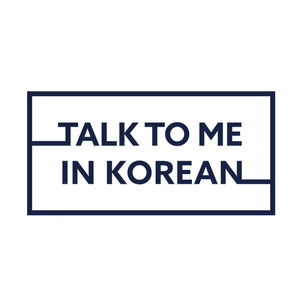
Talk To Me In Korean
Talk To Me In Korean


5 Listeners
All episodes
Best episodes
Top 10 Talk To Me In Korean Episodes
Goodpods has curated a list of the 10 best Talk To Me In Korean episodes, ranked by the number of listens and likes each episode have garnered from our listeners. If you are listening to Talk To Me In Korean for the first time, there's no better place to start than with one of these standout episodes. If you are a fan of the show, vote for your favorite Talk To Me In Korean episode by adding your comments to the episode page.

TTMIK Level 1 Lesson 2
Talk To Me In Korean
12/15/09 • 6 min
After listening to this lesson, when you are asked a YES/NO question, you will be able to answer that question with either YES or NO in Korean. 네. [ne] = Yes. 아니요. [aniyo] = No. But in Korean, when people say “네”, it is not the same as saying “Yes.” in English. The same goes for “아니요” too. This is because the Korean “네” expresses your “agreement” to what the other person said. And “아니요” expresses your “disagreement” or “denial” to what the other person said. Please read more about it in the PDF file attached to this lesson. TalkToMeInKorean.com

2 Listeners
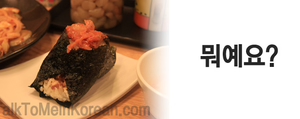
TTMIK Level 1 Lesson 5
Talk To Me In Korean
01/02/10 • 11 min
TTMIK Level 1 Lesson 5 http://TalkToMeInKorean.com After studying with this lesson, you will be able to say things like “A is B(noun).” or “I am ABC(noun).” in polite/formal Korean. 이에요 / 예요 [i-e-yo / ye-yo] 이에요 and 예요 have a similar role to that of the English verb “to be”. The fundamental difference, however, is the sentence structure that they are used in. English sentence structure: ABC + [be] + DEF. ** DEF is a noun here. Ex) ABC is DEF. I am ABC. You are XYZ. Korean sentence structure: ABC + DEF + [be] ** DEF is a noun here. Ex) 이거 ABC예요. [i-geo ABC-ye-yo] = This is ABC. In English, the verb “to be” is changed to “am” “are” or “is” depending on the subject of the sentence, but in Korean, you decide whether to use 이에요 [i-e-yo] or 예요 [ye-yo] depending on whether the last letter in the previous word ended in a consonant or a vowel. 이에요 and 예요 are very similar and also sound similar so it is not such a big problem if you mix up these two, but it is better to know the correct forms. When you want to say that ABC “is” DEF in Korean, if the word for “DEF” has a final consonant in the last letter, you add 이에요 [i-e-yo], but if it doesn’t have a final consonant and ends in a vowel, you add 예요 [ye-yo]. This is just to make the pronounciation of the connected part easier, so it will come naturally if you practice with some sample sentences. Final consonant + 이에요 [i-e-yo] No final consonant (Only vowel) + 예요 [ye-yo] Sample sentences 물이에요. = 물 + 이에요 [mul + i-e-yo] (It’s) water. 가방이에요. = 가방 + 이에요 [ga-bang + i-e-yo] (It’s) a bag. 사무실이에요. = 사무실 + 이에요 [sa-mu-sil + i-e-yo] (It’s) an office. 학교예요. = 학교 + 예요 [hak-gyo + ye-yo] (It’s) a school. 저예요. = 저 + 예요 [jeo + ye-yo] (It’s) me. As you can see from the examples above, in Korean, you don’t have to use articles like “a/an” or “the” as in English. So when you look up a noun in your Korean dictionary, you can add 이에요 or 예요 and then it means “It is ABC.” “That is DEF.” “I am XYZ.” You can also make this a question simply by raising the tone at the end of the sentence. 물이에요. [mul-i-e-yo] = It’s water. 물이에요? [mul-i-e-yo?] = Is that water? Is this water? 학교예요. [hak-gyo-ye-yo] = It’s a school. 학교예요? [hak-yo-ye-yo] = Is it a school? Are you at school now? 뭐 [mwo] = what 뭐예요? [mwo-ye-yo?] = What is it? What’s that?

2 Listeners
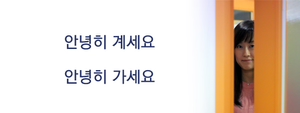
TTMIK Level 1 Lesson 3
Talk To Me In Korean
12/17/09 • 5 min
TTMIK Level 1 Lesson 3 After listening to this lesson, you will be able to say good-bye in Korean. Do you remember how to say “Hello.” in Korean? 안녕하세요. [an-nyeong-ha-se-yo] If you remember 안녕하세요, that is fantastic. And if you even remember that “안녕” in 안녕하세요 means “peace” and “well-being”, that is even more fantastic. 안녕 [an-nyeong] = well-being, peace, health And in Korean, when you say “Good-bye” in formal/polite Korean, 존댓말 [jondaetmal], there are two types of expressions, and both of these expressions have the word 안녕 [an-nyeong] in them. One is when you are the one who is leaving. And the other is when you are the one who is staying. If you are leaving, and the other person is (or the other people are) staying, you can say: 안녕히 계세요. [an-nyeong-hi gye-se-yo] If you are staying, an the other person is (or the other people are) leaving, you can say: 안녕히 가세요. [an-nyeong-hi ga-se-yo] For now, don’t worry about the literary meaning of the expressinos and just learn them as they are, but if you are really curious and if we were forced to translate these greetings, they would be translated like this. 안녕히 계세요. = Stay in peace. 안녕히 가세요. = Go in peace. But again, don’t worry about the literal meaning of these greetings JUST YET! ** One tip Hyunwoo would like to give you: When Korean people say 안녕하세요 [an-nyeong-ha-se-yo], 안녕히 계세요 [an-nyeong-hi gye-se-yo] or 안녕히 가세요 [an-nyeong-hi ga-se-yo], they don’t always pronounce EVERY single letter clearly. So often times, what you would hear is just the ending part, “세요” [se-yo]. So you can deliberately sound more fluent by just saying 세요 [se-yo] for all of these occasions. http://TalkToMeInKorean.com

2 Listeners

TTMIK Level 1 Lesson 1
Talk To Me In Korean
12/14/09 • 7 min
Learn to speak Korean at TalkToMeInKorean.com! - TTMIK Level 1 Lesson 1 - 안녕하세요. [an-nyeong-ha-se-yo] = Hello. / How are you? / Good morning. / Good afternoon. / Hi. 감사합니다. [gam-sa-ham-ni-da] = Thank you. ** Please feel free to ask us any question at TalkToMeInKorean.com !

2 Listeners

TTMIK Level 1 Lesson 17
Talk To Me In Korean
01/02/10 • 10 min
In this TTMIK lesson, we are looking at the past tense of the Korean language. By knowing how to change your verbs into the past tense, you will be able to talk about what you did yesterday, who you met last week, and etc. If you already understand how to change verbs into the present tense, using the past tense will be a breeze. And if you are still not sure how to use the present tense, don't worry! We are going to review that in this lesson too. Be sure to ask us any questions you have in the comment box! Thank you!

1 Listener
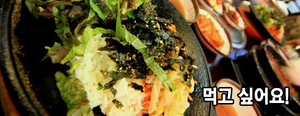
TTMIK Level 1 Lesson 13
Talk To Me In Korean
01/02/10 • 9 min
안녕하세요! In this TTMIK lesson, let's look at how to say "I want to"!!! It's very important to know how to say this when you start learning a foreign language because you need to express what you want in order to get what you want. Using this expression, you will be able to say what you want to eat, what you want to see, or where you want to go. Now listen in to find out how to use this expression, and while you do, be sure to check out the free PDF lesson notes as well! 감사합니다.

1 Listener
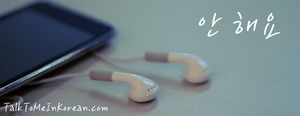
TTMIK Level 1 Lesson 21
Talk To Me In Korean
01/02/10 • 14 min
In this lesson, we are introducing how to form negative sentences in Korean. In Korean you can either add the word '안[an]' before a verb or conjugate the verb into a negative form by using the verb ending '지 않다[ji an-ta]' Find out how to do that and also practice with some sample sentences by listening to this lesson and as always, if you have any questions or feedback, we will be more than happy to hear them in the comment box for this post at TalkToMeInKorean.com!

1 Listener
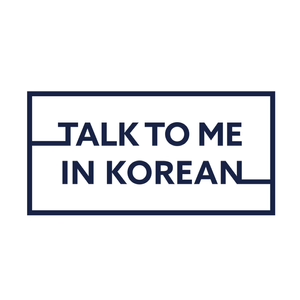
TTMIK - Show #1
Talk To Me In Korean
07/12/10 • 3 min
TTMIK - Show #1 http://TalkToMeInKorean http://twitter.com/ttmik http://youtube.com/user/talktomeinkorean

1 Listener

TTMIK Level 1 Lesson 22
Talk To Me In Korean
01/02/10 • 17 min
In this lesson, we are introducing some 하다 [ha-da] verbs. When we introduced the present tense conjugation in Lesson #16, and the past tense in Lesson #17, we mentioned that 하다 [ha-da] is conjugated in a special way, because it is followed by 여요 or 였어요 even though all the other verbs whose verb stems end in ᅡ[a] are followed by 아요 or 았어요.
And there is another reason that 하다 [ha-da] is unique. It is because you can easily form new verbs by putting nouns before 하다. This does not apply to all the Korean nouns, but you can add 하다 after many Korean nouns and form new verbs. Listen in to find out how that works and leave us comments if you have any questions! 감사합니다.

1 Listener

How to Wish a Happy New Year in Korean
Talk To Me In Korean
12/29/09 • 3 min
http://TalkToMeInKorean.com

1 Listener
Show more best episodes

Show more best episodes
FAQ
How many episodes does Talk To Me In Korean have?
Talk To Me In Korean currently has 2264 episodes available.
What topics does Talk To Me In Korean cover?
The podcast is about Free, Korean, Learn, Courses, Podcasts and Education.
What is the most popular episode on Talk To Me In Korean?
The episode title 'TTMIK Level 1 Lesson 3' is the most popular.
What is the average episode length on Talk To Me In Korean?
The average episode length on Talk To Me In Korean is 8 minutes.
How often are episodes of Talk To Me In Korean released?
Episodes of Talk To Me In Korean are typically released every day.
When was the first episode of Talk To Me In Korean?
The first episode of Talk To Me In Korean was released on Dec 31, 1969.
Show more FAQ

Show more FAQ